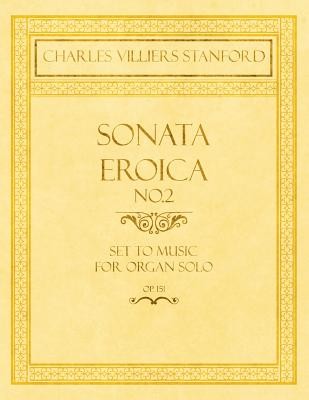
- We will send in 10–14 business days.
- Author: Charles Villiers Stanford
- Publisher: Classic Music Collection
- Year: 2018
- Pages: 34
- ISBN-10: 1528707184
- ISBN-13: 9781528707183
- Format: 21.6 x 27.9 x 0.2 cm, minkšti viršeliai
- Language: English
- SAVE -10% with code: EXTRA
Sonata Eroica No.2 - Set to Music for Organ Solo - Op.151 (e-book) (used book) | bookbook.eu
Reviews
Description
Charles V. Stanford's "Sonata Eroica No.2, Op.152" is a musical composition for solo organ in three movements, first composed during the spring of 1917 and published the same year by Stainer & Bell, London. The piece is dedicated to M. Charles-Marie Widor and "the great country to which he belongs". The three movements of this piece are: "Rheims - Allegro moderato", "Tempo di Marcia solenne", and "Verdun - Allegro moderato". On average, a performance of this particular piece requires 20-25 minutes. Sir Charles Villiers Stanford (1852 - 1924) was an Irish composer, conductor, and teacher of music. He was educated at the University of Cambridge and continued his studies in Berlin and Leipzig. He was a very influential composer, responsible for making Cambridge University Musical Society an internationally-acclaimed organisation. Stanford was also a profuse composer, producing a large corpus of work in many genres; however, he is perhaps best remembered for his Anglican choral works for church performance. His music eventually became overshadowed by that of Edward Elgar and a number of his former pupils in the in the 20th century. Presented clearly with room for notes and annotations, this volume is ideal for students and those with an interest in learning to play one of Stanford's masterpieces. Many vintage books such as this are becoming increasingly scarce and expensive. We are republishing this volume now in a modern, high-quality edition complete with a specially commissioned new introduction on the history of musical notation.
EXTRA 10 % discount with code: EXTRA
The promotion ends in 23d.16:22:15
The discount code is valid when purchasing from 10 €. Discounts do not stack.
- Author: Charles Villiers Stanford
- Publisher: Classic Music Collection
- Year: 2018
- Pages: 34
- ISBN-10: 1528707184
- ISBN-13: 9781528707183
- Format: 21.6 x 27.9 x 0.2 cm, minkšti viršeliai
- Language: English English
Charles V. Stanford's "Sonata Eroica No.2, Op.152" is a musical composition for solo organ in three movements, first composed during the spring of 1917 and published the same year by Stainer & Bell, London. The piece is dedicated to M. Charles-Marie Widor and "the great country to which he belongs". The three movements of this piece are: "Rheims - Allegro moderato", "Tempo di Marcia solenne", and "Verdun - Allegro moderato". On average, a performance of this particular piece requires 20-25 minutes. Sir Charles Villiers Stanford (1852 - 1924) was an Irish composer, conductor, and teacher of music. He was educated at the University of Cambridge and continued his studies in Berlin and Leipzig. He was a very influential composer, responsible for making Cambridge University Musical Society an internationally-acclaimed organisation. Stanford was also a profuse composer, producing a large corpus of work in many genres; however, he is perhaps best remembered for his Anglican choral works for church performance. His music eventually became overshadowed by that of Edward Elgar and a number of his former pupils in the in the 20th century. Presented clearly with room for notes and annotations, this volume is ideal for students and those with an interest in learning to play one of Stanford's masterpieces. Many vintage books such as this are becoming increasingly scarce and expensive. We are republishing this volume now in a modern, high-quality edition complete with a specially commissioned new introduction on the history of musical notation.


Reviews